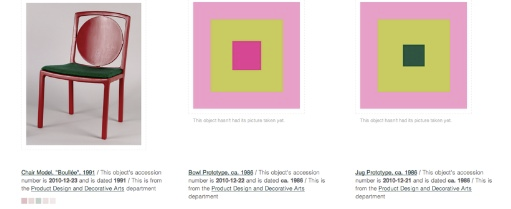MuseumNext 2013 - Final Thoughts
/What did I learn from MuseumNext 2013?
Many wondrous things, but after much pondering here are some snippets that spoke to me;
Andrew Lewis (V&A) blog
- Oonagh Murphy (researcher) blog
- MuseumNext tumblr http://museumnext.tumblr.com/
- Google Docs for links and more detail on keynotes
- Claire Ross (researcher) blog
Products and Offerings
'Prototype is the product' (Cooper-Hewitt National Design Museum) - acceptable to put things out in Beta or at least not as perfect as previously measured. It allows development to continue based on credible user experiences, examples from V&A, Museu Nacional d'Art de Catalunya and Cooper-Hewitt National Design Museum.
Not all science involves test tubes and loud bangs, there are projects (Weblab) in science spaces which are engaging the audience to interact, learn and enjoy the world around them more.
Websites and audience interactions are constantly changing, museums need to make the choices how to adapt not when, e.g. Rijksmuseum open everything on the Rijks Studio website >125,000 high-res images for people to view, collect, edit and interpret, while their galleries have no technology.
We will never ever be finished collecting and interpreting (Pocket Museum)
Theory
Ablative thinking (Science Gallery) - allowing things to be done by, doing things with and drawing ideas from an active community of participants.
Marketing
A short video on YouTube with a catchy tune can make your offering more exciting:
Facebook tips and ideas (National Museum of Denmark) use it as a place to communicate cultural history rather than trying to convert digital visitors to real visitors.
Participation
Ask the audience to participate and the response will vary, Your Paintings replicated Galaxy Zoo for amateur astronomers and has spawned a following of 9000 art history tagging volunteers, with 50 (0.5%) earning title of super taggers.
Digital natives need to be engaged in the real objects too (Naturalis Biodiversity Center) and can be invited to make the bridge from real to digital to real (Tate Kids).
Relationships are key, even in digital world, "Affection Management is a mindset that helps cultural institutions build strong relationship with the different audiences and play a relevant role in their communities" and is being deployed in some of the top 1% of world's museums. Building repeat visits and strengthening relationships is key to Dallas Museum of Art - Friends.
Innovations
Always room for new ideas and innovations (Audio Tour Hack)
Museums can contribute to today's debates and act as catalysts in social and environmental and economical change (Happy Museum) and (Museum of Science and Industry, Manchester)
There are many HUGE ideas and ambitions out there, like the semantic web and the challenge is how it can be used for collections (National Museum of Denmark)
A robust data engine is a firm foundation to begin with and then incremental changes. (V&A)
Museums 2020 and tools on how to cope (Flow Associates)
Having now been to four of the five MuseumNext conferences my enthusiasm has not waned, I did have less 'wow' moments this year, that said it was countered by the fact the presentations did evidence more senior management buy-in of the digital opportunities available to museums. The director of the Van Gogh Museum was very supportive of the new policy to allow photography and also the opportunities the 'proliferation of devices' was bringing to the visitor and museums. All that remians is to find our where the next one will be in May 2014.




